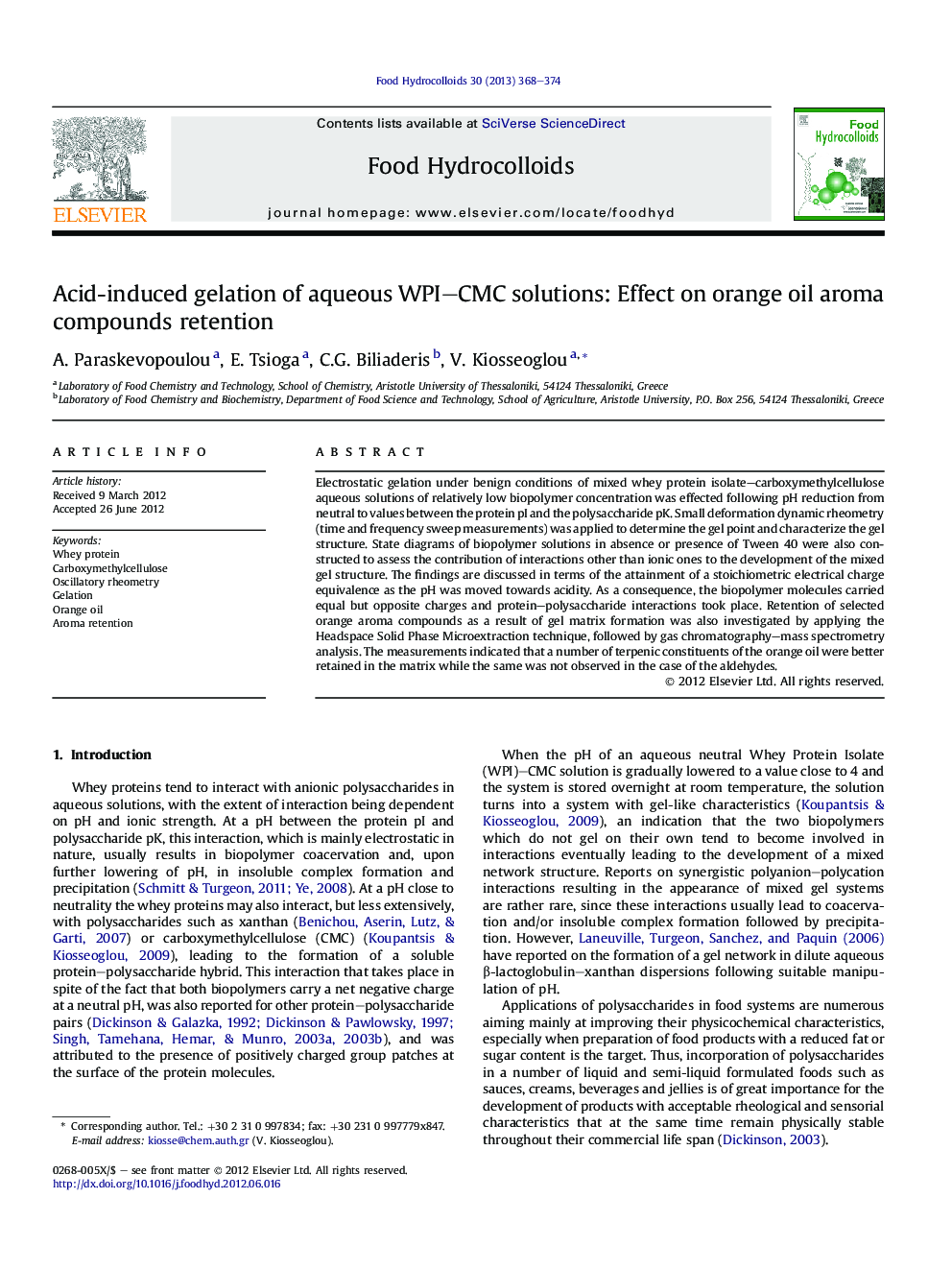| Article ID | Journal | Published Year | Pages | File Type |
|---|---|---|---|---|
| 604761 | Food Hydrocolloids | 2013 | 7 Pages |
Electrostatic gelation under benign conditions of mixed whey protein isolate–carboxymethylcellulose aqueous solutions of relatively low biopolymer concentration was effected following pH reduction from neutral to values between the protein pI and the polysaccharide pK. Small deformation dynamic rheometry (time and frequency sweep measurements) was applied to determine the gel point and characterize the gel structure. State diagrams of biopolymer solutions in absence or presence of Tween 40 were also constructed to assess the contribution of interactions other than ionic ones to the development of the mixed gel structure. The findings are discussed in terms of the attainment of a stoichiometric electrical charge equivalence as the pH was moved towards acidity. As a consequence, the biopolymer molecules carried equal but opposite charges and protein–polysaccharide interactions took place. Retention of selected orange aroma compounds as a result of gel matrix formation was also investigated by applying the Headspace Solid Phase Microextraction technique, followed by gas chromatography–mass spectrometry analysis. The measurements indicated that a number of terpenic constituents of the orange oil were better retained in the matrix while the same was not observed in the case of the aldehydes.
Graphical abstractFigure optionsDownload full-size imageDownload as PowerPoint slideHighlights► Acid-induced gelation of aqueous WPI–CMC mixtures was studied. ► Gel formation was attributed to ionic interactions between the biopolymers. ► Hydrophobic interactions between protein molecules played a secondary role. ► WPI–CMC gel formation affected orange oil aroma compounds retention.
